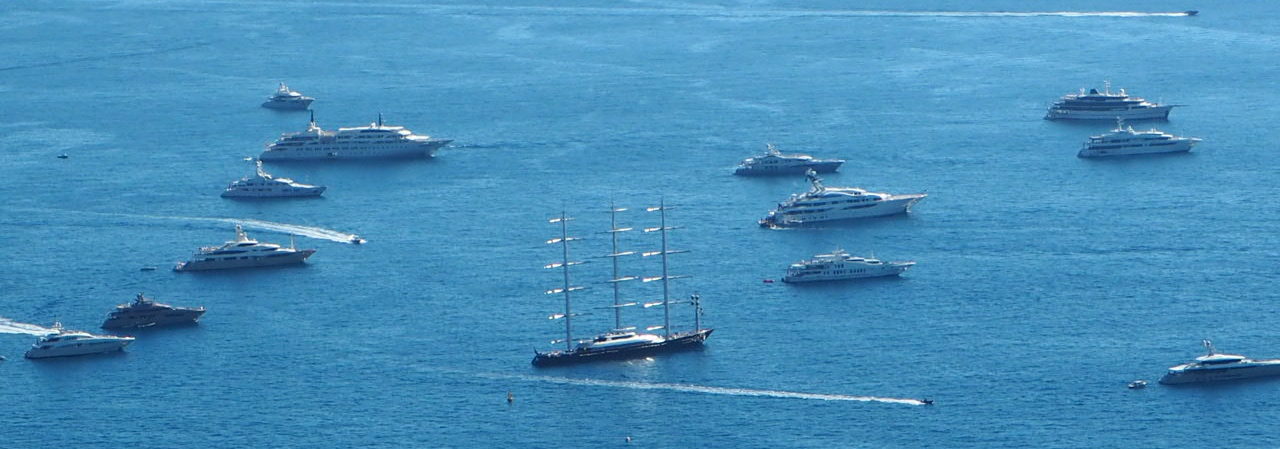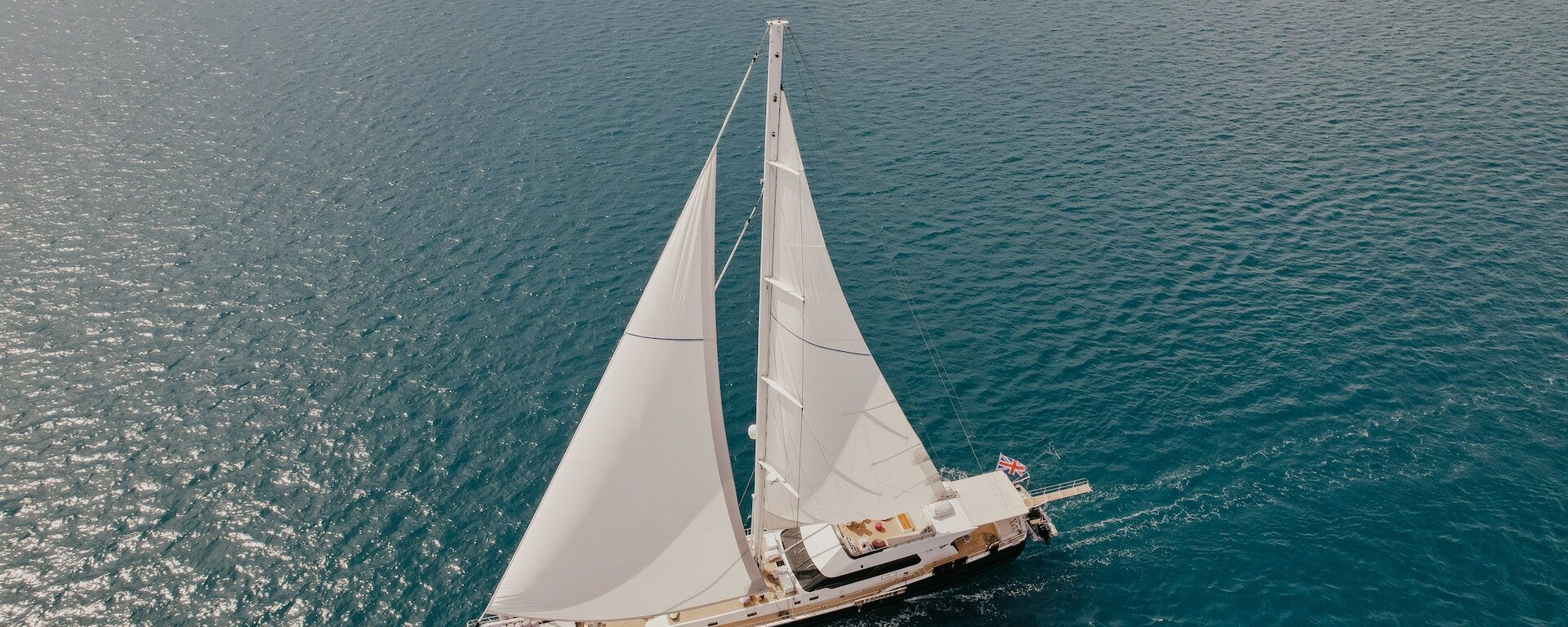At sea, a yacht’s flag or pennants are used to communicate, affirm, indicate, and show respect to many different people, groups, and territories. Flags have been an important part of sailing for many years and their proper use is respected all over the world.
The general principle of raising the flag and pennants on each yacht is similar. The most important flag should be placed in the most representative place, the second most important flag should be placed second in the hierarchy, and so on. It remains to establish this hierarchy of importance of places on the yacht. The stern is the most important thing on any vessel. Generally the second most important is the mainmast top. The third place in the hierarchy is the right spreader of the mainmast, and the fourth – its left spreader.
Types of flags and the basics of flagging
Flag / national flag
The highest flag position on a ship is reserved for the national flag (flag). It should be as close to the ship’s stern as possible. The flag indicates the ship’s country of registration and nationality. Please note that yachts fly the nautical flag of the country or territory where they are registered and not the national flag of their owner. More information on flag selection can be found here .
Flags are usually hoisted from 8:00 am to sunset. It doesn’t hang out at night. It is also important to flag down before leaving the yacht if the vessel will be unmanned at sunset.
The half-lowered flag signifies national mourning. If masts ashore or other ships are flagged down, our flag must be lowered. Lowering the flag while sailing means that there is a deceased person on board – meeting such a ship (yacht) you should lower your own flag halfway for a moment.
Flying the wrong, damaged, wrong size or otherwise invalid flag is a violation of the law and is strictly enforced worldwide. Respect for the flag is undoubtedly one of the most important sailing customs. The flag should be the largest flag used on the boat.

Courtesy flag
The courtesy flag is flown on the starboard side. It shows respect for the country in whose waters you sail. It’s smaller than the flag. It is not only a custom, but also the law in force, which requires the flag of the visited country to be raised there at the moment of entering its territorial waters.
Many authorities will fine you for having a battered courtesy flag, and some will even refuse entry if you don’t hang it.
Courtesy flags are traditionally raised and lowered with the ensign, although in modern times the practice is typically less rigorous. However, some captains may still expect their crew to follow flag guidelines and yacht etiquette in a more traditional manner.
The habits observed in different foreign waters differ from each other. Therefore, it is worth learning the proper procedure for the country you are entering. For example, in some countries it is customary to display the courtesy flag only after the quarantine flag has appeared.
Q flag
A yellow flag Q (Quebec) sails a yacht that declares itself free of quarantine diseases and requests boarding by port state control inspection to allow „free pratique” to be granted.
Opinion seems to be divided as to whether flag Q should be placed above the starboard courtesy flag. If you’re not sure what protocol to follow, it’s worth talking to other local yachts and captains to see what’s usually going on in the area.
 The „Quebec” signal flag, called „Yellow Jack” is a simple yellow flag that has historically been used to signal quarantine (it’s short for Q). It is currently the signal of a yacht free of quarantine diseases
The „Quebec” signal flag, called „Yellow Jack” is a simple yellow flag that has historically been used to signal quarantine (it’s short for Q). It is currently the signal of a yacht free of quarantine diseasesPennants and private flags
The pennants are triangular-shaped distinctive flags. Most often they mean recreational organizations to which the yacht belongs, such as a yacht club. The pennant hangs on the port starboard side.

Private flags that are flown while the owner is on or near the deck follow the same rules as pennants.
Yacht flag sizes
For flags, the standard rule of thumb that many use when determining the size of a ship’s flag is one inch per foot of ship’s length. You will usually be ordering flags in fixed sizes. So it’s best to order a larger size that exceeds the dimensions of what you need.
Yachts that are quite large typically use some of the larger production flags. Whichever size you choose, it’s important to have 360 degrees of flapping space around it. Otherwise, your flag will be in tatters before you know it.
Pennants and courtesy flags are often seen on yachts around a quarter to half the size of the flag.


